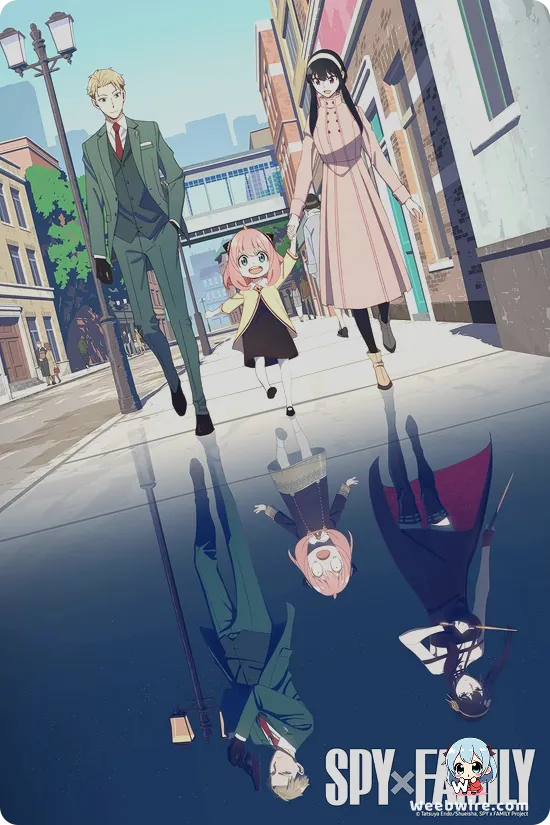Unveiling the Hidden Brilliance: 'Waiting in the Summer's' Enduring Blend of Romance, Sci-Fi, and Human Heart

Step into the enchanting world of 'Waiting in the Summer' (Ano Natsu de Matteru), J.C.STAFF's critically acclaimed original anime series from 2012, a heartwarming narrative that continues to captivate audiences with its exquisite blend of poignant romance, authentic coming-of-age drama, and subtle, yet impactful, science fiction elements. Beyond its beloved characters and idyllic setting, 'Waiting in the Summer' is a treasure trove of creative brilliance and behind-the-scenes insights, elevating it from a simple summer love story to a meticulously crafted masterpiece. These deeper layers offer fans, new and old, an enriched appreciation for the artistic genius that brought this unforgettable tale to life.
At its heart, the series introduces Kaito Kirishima, a high school student whose passion for filmmaking leads him to witness a mysterious aerial incident one fateful night. The following day, the arrival of transfer student Ichika Takatsuki unravels a compelling connection between her and the extraordinary event. Their blossoming romance navigates the complexities of Ichika's secret alien identity and a delicate web of unrequited affections among Kaito's circle of friends, forming the emotional core that drives the narrative.
The Visionary Creative Team
A cornerstone of 'Waiting in the Summer's' success lies in the formidable creative partnership of director Tatsuyuki Nagai and screenwriter Mari Okada. This celebrated duo is renowned for their collaborative triumphs on some of anime's most emotionally resonant and critically lauded series, including the iconic high school romance 'Toradora!' and the profoundly moving drama 'Anohana: The Flower We Saw That Day.' Their undeniable synergy shines brightly in 'Waiting in the Summer,' where Nagai's adept directorial vision for portraying nuanced human emotions perfectly complements Okada's unparalleled skill in weaving intricate character relationships and crafting poignant dialogue. The result is a narrative that feels profoundly personal yet universally relatable, skillfully anchoring its fantastical premise in genuine human experience. Their prior successes set a high benchmark, and 'Waiting in the Summer' stands proudly among them, a testament to their signature blend of humor, heartbreak, and hopeful introspection.

Authentic Settings and Immersion
Adding another layer of immersion to the anime is its remarkably authentic setting. 'Waiting in the Summer' painstakingly recreates real-world locations within Komoro City, nestled in Japan's picturesque Nagano Prefecture. The production team embarked on extensive location scouting, meticulously capturing the distinctive atmosphere of the rural Japanese landscape from bustling train stations and charming local shops to majestic mountains and tranquil rivers. This unwavering commitment to realism by J.C.STAFF grounds the fantastical elements of the plot in a tangible, recognizable world. This dedication has inspired countless fans to undertake pilgrimages to Komoro City, exploring the very spots depicted in the anime, underscoring the deep connection viewers forge with its evocative setting. This attention to detail not only elevates the visual splendor but also imbues the story with a profound sense of place and belonging, making the characters' daily lives feel more vibrant and accessible. The artful juxtaposition of ordinary life with extraordinary circumstances is a defining characteristic of the series, with the real-world backdrop playing a pivotal role in achieving this delicate balance.
Remon Yamano's True Identity
Perhaps the most surprising and often delightful reveal for new viewers, and a masterstroke of narrative misdirection for those who experienced its original broadcast, concerns the true identity of Remon Yamano. Initially appearing as an eccentric, playfully mischievous upperclassman who frequently eggs on Kaito's filmmaking ambitions, Remon is ultimately unveiled as an agent of the Galactic Federation. Her mission: to observe and assist Ichika, who is on Earth conducting vital research. This revelation brilliantly recontextualizes her seemingly random and quirky behaviors throughout the series, transforming them into calculated actions with a clear, underlying purpose. Her deadpan delivery of outrageous lines and her inexplicable knowledge suddenly click into place, adding a layer of comedic genius and unexpected depth to her character. Remon's true nature exemplifies how 'Waiting in the Summer' expertly integrates its sci-fi elements into the fabric of its slice-of-life narrative without ever overshadowing the compelling human drama.
Subtle Sci-Fi as a Catalyst
The central sci-fi premise, revolving around Ichika's extraterrestrial origins and her research, operates not as the primary spectacle but as a potent catalyst for the romantic and dramatic developments. The alien aspect is never overly elaborated or exploited for grand space battles; instead, it functions as a subtle, underlying force that propels the characters' emotional journeys, compelling them to confront their deepest feelings and fears. This restrained deployment of science fiction ensures that human relationships remain paramount, underscoring universal themes of first love, the bonds of friendship, and the bittersweet complexities of unrequited affections. The delicate equilibrium achieved here is a testament to Okada's insightful script, which consistently prioritizes profound character development over conventional genre tropes.
Kaito's Camera: A Symbol of Memory
Another compelling detail centers on Kaito's cherished 8mm film camera. Far from being a mere recreational pursuit, the camera evolves into a significant plot device and a powerful symbol of Kaito's innate desire to capture fleeting moments and safeguard precious memories. His burgeoning passion for filmmaking becomes inextricably linked with his growing feelings for Ichika, as he frequently turns his lens towards her, immortalizing their shared experiences. The camera also assumes a pivotal role in the series' emotional climax, serving as a conduit through which truths are revealed and life-altering decisions are made. Its consistent presence underscores the profound themes of memory and the inexorable passage of time, infusing the youthful romance with a layer of thoughtful introspection. The vibrant visual storytelling techniques employed by J.C.STAFF, characterized by their rich colors and expressive character designs by Masayoshi Tanaka, further amplify the emotional resonance, making every frame feel like a cherished memory preserved on film.
'Waiting in the Summer' stands as a masterful anime that seamlessly weaves together diverse genres, evoking both laughter and tears, and ultimately leaving an indelible mark on its audience. The visionary creative team, the unwavering dedication to authentic settings, and the brilliant narrative twists particularly the revelation of Remon Yamano's true identity all contribute to its enduring appeal. It serves as a powerful reminder that even within stories featuring extraterrestrial visitors, it is the profoundly human experiences that truly resonate and render an anime unforgettable. The series beautifully encapsulates the essence of summer, the vibrancy of youth, and the profound, often confusing, yet ultimately rewarding journey of first love, solidifying its status as a perennial favorite for those who cherish a story imbued with both deep heart and a touch of the extraordinary.
Credits
Waiting in the Summer
Author
I*S
Cover Art
Masayoshi Tanaka
Studio
J.C.STAFF
Publisher
Bandai Visual
Producers





